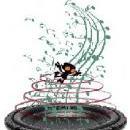-
Posts
5,797 -
Joined
-
Last visited
-
Days Won
31
Reputation Activity
-
 Nabeel Ansari got a reaction from ShadowRaz in Beyerdynamic DT 880 Premium 250 ohm - Do I need an amp?
Nabeel Ansari got a reaction from ShadowRaz in Beyerdynamic DT 880 Premium 250 ohm - Do I need an amp?
A soundcard does not free CPU load from your projects, most of the time. You have to buy more expensive soundcards with on-board DSP (basically VST's that run only on the soundcard processor) and then use that on-board DSP instead of any other vst's to free CPU load.
A soundcard also doesn't improve sound quality that much if you're not experienced. It will, however, improve noise level by a lot, and using proper ASIO drivers made for the soundcard will make your projects able to handle more instruments and effects, CPU-wise.
The choice of headphones (DT 880) and DAW (FL Studio) doesn't matter at all when choosing an audio interface.
As for the 32 Ohm, in my experience they'd get much noisier much more quickly. You have to drive more level into the 250 Ohm, but the noise level is way better. This is testing both resistance levels of headphones in the same exact headphone jack on my interface. The 250 Ohm also has better frequency response, but you really want to pick up Sonarworks Reference 4 (headphone edition) so that you can correct the frequency response and get all that bass back. DT 880's have pretty weak bass and very shrill treble, Reference will flatten it out nicely.
-
 Nabeel Ansari got a reaction from Master Mi in Faithful studio monitor speakers with flat frequency response and truthful high definition sound
Nabeel Ansari got a reaction from Master Mi in Faithful studio monitor speakers with flat frequency response and truthful high definition sound
Definitely why I said getting a sub isn't the best idea unless your room is set-up.
-
 Nabeel Ansari got a reaction from FenixDown in NEW ALBUM - COLOURS by PRYZM (Electro Organic Prog)
Nabeel Ansari got a reaction from FenixDown in NEW ALBUM - COLOURS by PRYZM (Electro Organic Prog)
Hey guys,
After 9 years being on OverClocked ReMix, basically starting to my musical adventure here on the forums (first as Neblix, moving on from that name to my real name, then starting a new brand), I'm proud to finally release my first album of original music, COLOURS.
Bandcamp: https://pryzmusic.bandcamp.com/album/colours
CD Baby: https://store.cdbaby.com/cd/pryzm
OverClocked Records: https://overclockedrecords.com/release/colours/
Will also be coming to all major storefronts in the coming week, including streaming platforms! It's already available for free on YouTube and SoundCloud at low-quality streaming.
COLOURS is my debut album wrapping up my early young adult experience and entering the world as an independent creative and engineer. With this album is the introduction of the PRYZM, my metaphor for the assimilation of different influences across the spectrum of music. Music can be expressed in many different ways, and my motivation to compose is to learn all of these different expressions and merge them into my identity as a composer.
You can also grab my new social media pages to stay up to date with new music!
OFFICIAL WEBSITE: https://pryzmusic.com/
FACEBOOK: https://facebook.com/pryzmusic
TWITTER: https://twitter.com/pryzmusic
YOUTUBE: https://www.youtube.com/channel/UCkomW-RLYNvAzhGs0dVofhA
SOUNDCLOUD: https://soundcloud.com/pryzmusic
TWITCH.TV: https://twitch.tv/pryzmusic
-
 Nabeel Ansari reacted to Sixto in NEW ALBUM - COLOURS by PRYZM (Electro Organic Prog)
Nabeel Ansari reacted to Sixto in NEW ALBUM - COLOURS by PRYZM (Electro Organic Prog)
This album is pretty amazing. The title "Colors" is pretty fitting, I think. Plus, it's reeeeally fun to improvise over when you're trying to improve your guitar playing
-
 Nabeel Ansari got a reaction from Master Mi in Fl studio
Nabeel Ansari got a reaction from Master Mi in Fl studio
Most DAW's have parametric EQ's with visualizers. Patterns are nice but constricting when they're the only option; S1's implementation of patterns are better because they're optional. (the rest of this point is just an opinion, can skip) Patterns only work for all types of music after a few years of learning how to work around them to write what you want (in other words, not outright prohibitive, but an annoying philosophical hindrance). They also leave 0 parity with the arrangement view. In other DAW's, when you create a MIDI clip in the timeline, it exists there in the timeline; when you automate CC in the piano roll, it's the same automation displayed in the timeline. In the piano roll you can just see everything on the track across the timeline, not just the clip you have selected. This allows for a more comprehensive and holistic view of your music instead of thinking of it as a complex combination of independent objects, which rarely works unless you're writing electronic music. When working with patterns, you're constantly doing mental bookkeeping to remember how the pattern object fits into the rest of the music, because the piano roll sure as hell isn't going to tell you. The little mini-preview they added helps, but it's still a flawed design. Every single DAW has a piano roll. Couple other DAWs' ghost note implementations are vastly superior to FL in that they don't require you to funnel all your part-writing into a single pattern object (making it useless for arrangement view, since it's just a single-track jambled mess). Additionally, a DAW like S1 actually lets you edit the multiple midi channels at the same time, instead of only being able to view them. This is pretty crucial when transposing or altering chords across several patches at once. Literally every DAW has a duplicate bar function. In S1 you just highlight notes and hit D. DAW's like Reason also have mini playlist views. FL is like the last DAW to have allowed good time sig changes. Am just responding to "most of which I don't see in other DAW's", it's more like the other way around, most DAW's have most of these things except some key differences like lifetime free updates, and then patterns, which I don't think is really advantageous at all to anyone except people who have it as their first music production experience. And even then, not so much, did it for 8 years and then switched off and never miss it. There's nothing patterns can do that other DAW's can't.
There's other stuff I don't miss about FL, like the amount of clicks it takes to do stuff. Setting up multi-midi channel samplers is freaking horrifying. In S1 it takes about 4 or 5 seconds to get 16 Kontakt MIDI channels and 16 corresponding mixer outputs. Also, lack of native MIDI support in that area, having to link your controller's knobs to manually configured CC knobs inside the MIDI out channel just to get stuff like modwheel and sustain pedal? Ridiculous.
Also, applying FX to audio clips is something lightyears faster in S1, you can just put FX on the clip itself, and then print in place (good for sound design electro segments). In FL you have to assign the audio clip a mixer channel.
There's also that horrid behavior where you can slice stuff but they're still part of that one "clip" object instead of splitting into independent data. Audio editing in general is bad in FL because everything is abstracted into clip containers, and doing simple volume crossfades between two overlapping clips is a whole ordeal instead of hitting something like "X" in other DAW's. Don't even get me started on "automation clips".
It just seems like everything I'd want to do in a DAW takes extra effort to pull off in FL Studio.
I get that people really like it and are comfortable with it, but you can work with anything to create great music. The usage and the users are not a testament to good design or learning curve. So I'll never recommend FL to anyone, but I'd never be bothered if I had to work with someone who used it, since I'd trust them to know how to coerce the spaghetti to get a good result.
-
 Nabeel Ansari got a reaction from HoboKa in FL Studio 20 now released
Nabeel Ansari got a reaction from HoboKa in FL Studio 20 now released
Good update for FL users. The track bouncing looks very well-thought out.
-
 Nabeel Ansari got a reaction from Master Mi in Faithful studio monitor speakers with flat frequency response and truthful high definition sound
Nabeel Ansari got a reaction from Master Mi in Faithful studio monitor speakers with flat frequency response and truthful high definition sound
Nowadays small details of response comparison between studio monitors are moot and needless effort to shop around for. If you pick up Sonarworks Reference 4 w/ their mic, then once you set up your monitors in the right configuration, calibrate the Reference 4 profile. The mic will detect differences between expected signal sound and what both your monitors and room are giving you, and apply a counter filter that cancels the differences out. You do have to manually set it to linear phase, which adds some latency to your path, but having that un-affected phase response is crucial.
It gets you way better results than agonizing over configuration settings. The important thing is that you just buy a good quality set with a decent response and then have your room at least minimally treated so that Reference doesn't have to do an unnatural amount of work to fix it.
Reference mostly gets a ton of praise all around, but also a small handful of disappointed customers, so you can shop around for other companies that do the same thing, there are multiple ones.
https://www.sweetwater.com/store/detail/Ref4StuMicBun--sonarworks-reference-4-studio-with-mic
That being said, your mileage may vary if you're throwing a subwoofer in there too, since it needs to calculate L/R independently. Honestly like... a subwoofer isn't necessary, and I see of accomplished (home) engineers leaving it out of their setups. Getting something above 5" drivers for your monitors will already guarantee you a good sounding bass response.
Getting a sub can actually be detrimental if your room isn't right for it, or you aren't prepared to potentially do a lot of interior design work to make it work.
-
 Nabeel Ansari got a reaction from Necrox in Beyerdynamic DT 880 Premium 250 ohm - Do I need an amp?
Nabeel Ansari got a reaction from Necrox in Beyerdynamic DT 880 Premium 250 ohm - Do I need an amp?
https://storeus.sonarworks.com/products/reference-4-headphone-edition
This is the best investment you can put into a headphone setup. They have EQ profiles for common pro headphones (including the 880 250ohm premium) and you can load it systemwide (and as a vst on your DAW master) to apply the exactly counter EQ contour to make your headphones as even and rounded (flat, yes, but I stopped using that term because it implies the music would sound lifeless) as possible. Systemwide is super great because I can listen to reference songs on my computer from music players or in the browser, or like play games/movies, and still have the sound correction.
You can also simulate other headphones and stereo systems with their stored profiles, instead of just going flat. And if you personally don't LIKE the completely flat response, you can also apply minor treble and bass adjustments to suit your tastes.
It also has a linear phase option, with some additional latency, to ensure there is absolutely 0 change to the sound outside of the spectrum's range of loudness.
Once I did it for my DT 880's I've sworn never to go back. The difference is actually pretty dramatic; as soon as I toggle the calibration off, the life is sapped out of the mix, the sound of the headphones themselves is pretty tinny and boomy by comparison, and hearing the difference explained basically all of my common mixing mistakes that people point out to me. Weak low mids, excessive bass, harsh upper mids, which were all unknowing compensations for the 880's actual frequency response. Listening to my older stuff on this, it was pretty clear.
Here is the DT 880's average freq response:
As it says in the legend, the BLUE is the headphone's average response, the GREEN is the EQ it applies to counter it, and the PURPLE is the end result (mostly flat, with some bass rolloff that doesn't matter too much in practice, and is necessary because of physics and whatnot).
-
 Nabeel Ansari got a reaction from timaeus222 in Beyerdynamic DT 880 Premium 250 ohm - Do I need an amp?
Nabeel Ansari got a reaction from timaeus222 in Beyerdynamic DT 880 Premium 250 ohm - Do I need an amp?
https://storeus.sonarworks.com/products/reference-4-headphone-edition
This is the best investment you can put into a headphone setup. They have EQ profiles for common pro headphones (including the 880 250ohm premium) and you can load it systemwide (and as a vst on your DAW master) to apply the exactly counter EQ contour to make your headphones as even and rounded (flat, yes, but I stopped using that term because it implies the music would sound lifeless) as possible. Systemwide is super great because I can listen to reference songs on my computer from music players or in the browser, or like play games/movies, and still have the sound correction.
You can also simulate other headphones and stereo systems with their stored profiles, instead of just going flat. And if you personally don't LIKE the completely flat response, you can also apply minor treble and bass adjustments to suit your tastes.
It also has a linear phase option, with some additional latency, to ensure there is absolutely 0 change to the sound outside of the spectrum's range of loudness.
Once I did it for my DT 880's I've sworn never to go back. The difference is actually pretty dramatic; as soon as I toggle the calibration off, the life is sapped out of the mix, the sound of the headphones themselves is pretty tinny and boomy by comparison, and hearing the difference explained basically all of my common mixing mistakes that people point out to me. Weak low mids, excessive bass, harsh upper mids, which were all unknowing compensations for the 880's actual frequency response. Listening to my older stuff on this, it was pretty clear.
Here is the DT 880's average freq response:
As it says in the legend, the BLUE is the headphone's average response, the GREEN is the EQ it applies to counter it, and the PURPLE is the end result (mostly flat, with some bass rolloff that doesn't matter too much in practice, and is necessary because of physics and whatnot).
-
 Nabeel Ansari reacted to Ravich in Tips on writing a bass line
Nabeel Ansari reacted to Ravich in Tips on writing a bass line
Listen to music that you'd like to emulate and study what the bass does. Relying on theory only works if it is from an analysis that you can extract from relevant music.
"Rules" are derived from the analysis of trends. Theory is descriptive, not prescriptive.
-
 Nabeel Ansari got a reaction from DarkeSword in What genre of music fits each style of Sonic best?
Nabeel Ansari got a reaction from DarkeSword in What genre of music fits each style of Sonic best?
City Escape is probably one of the best rock songs, ever. Checks all the boxes.
-
 Nabeel Ansari got a reaction from Black_Doom in What genre of music fits each style of Sonic best?
Nabeel Ansari got a reaction from Black_Doom in What genre of music fits each style of Sonic best?
I feel bad for anyone who thinks Crash 40's Sonic music is bad.
-

-
 Nabeel Ansari got a reaction from AngelCityOutlaw in What type of promotion is best for a music artist?
Nabeel Ansari got a reaction from AngelCityOutlaw in What type of promotion is best for a music artist?
I don't really know many people in the industry who got where they were by being lucky instead of having the patience and intelligence to find and seize opportunities.
The latter may not be "hard work", but it's certainly not random, which is what you're implying. There are pretty commonly agreed upon strategies to succeed it in the industry, just not everyone has the willpower or patience to consistently follow through with them over a course of many years. It's not easy work, dare I say, it is... hard work after all. So not "everyone would do them". That's only assuming they're easy strategies, which they're not. They're very demanding and not everyone is up for them.
That's actually why I quit trying! I can see myself succeeding as a game composer, I'd also have to sell my soul a bit and slave away at cold emails and pay out the ass for networking events. Can't handle it. So I don't, and found an opportunity elsewhere in a different industry.
But you don't see me being cranky and cynical and butthurt about it everytime someone asks for career advice.
-
 Nabeel Ansari got a reaction from TheChargingRhino in FL studio help with electro music-ish?
Nabeel Ansari got a reaction from TheChargingRhino in FL studio help with electro music-ish?
It's a square wave.
-
 Nabeel Ansari got a reaction from Beardless in FL studio help with electro music-ish?
Nabeel Ansari got a reaction from Beardless in FL studio help with electro music-ish?
It's a square wave.
-
 Nabeel Ansari got a reaction from timaeus222 in FL studio help with electro music-ish?
Nabeel Ansari got a reaction from timaeus222 in FL studio help with electro music-ish?
It's a square wave.
-
 Nabeel Ansari got a reaction from InfernoZN in How do you get over fear of failure?
Nabeel Ansari got a reaction from InfernoZN in How do you get over fear of failure?
Writing bad music is actually the only way to eventually write good music. Ideas can bottle up in a queue, so even if your latest creative impulse sounds like crap you need to give it creative due diligence and do some work on it until your muse is ready to move on. Writing more frequently (short pieces every day, for example) helps because you'll cycle out of the bad stuff more often.
Then as you grow this keeps happening to you but the general quality of your stuff trends upwards. So you still cycle through what you perceive is good and bad, but your now bad is actually pretty good.
In other words, you'll most certainly get better, whether you think you are or not.
-
 Nabeel Ansari got a reaction from TheChargingRhino in Music Programs Compatible with FL?
Nabeel Ansari got a reaction from TheChargingRhino in Music Programs Compatible with FL?
Almost every VST that exists will work fine in FL Studio.
Super Audio Cart is a Kontakt library, it is built to be run inside of Kontakt. You have to run Super Audio Cart in Kontakt. There is no other way to do it. It's like if you have a Wii U game, you have to have a Wii U to play it. Super Audio Cart is the game, Kontakt is the Wii U.
Kontakt itself is a VST, and it will work with any host programs that you can write music in (like FL Studio, Reason, Ableton Live, Pro Tools, Cubase, Studio One, and more). Much like any VST's, they will all work in these programs.
The only time a VST "doesn't work" is if it's poorly coded and unstable, or if FL Studio itself has some obscure issue in the coding. But for thousands and thousands of VST's this is not an issue. Only a small few.
Ableton Live is not a plugin. It isn't an instrument that generates sound or an effect. You can not use it like a VST. It is a host program like FL Studio that you can put VST's inside of, though. So you can use Ableton Live or you can use FL Studio. You pick one.
-
 Nabeel Ansari got a reaction from timaeus222 in Music Programs Compatible with FL?
Nabeel Ansari got a reaction from timaeus222 in Music Programs Compatible with FL?
Almost every VST that exists will work fine in FL Studio.
Super Audio Cart is a Kontakt library, it is built to be run inside of Kontakt. You have to run Super Audio Cart in Kontakt. There is no other way to do it. It's like if you have a Wii U game, you have to have a Wii U to play it. Super Audio Cart is the game, Kontakt is the Wii U.
Kontakt itself is a VST, and it will work with any host programs that you can write music in (like FL Studio, Reason, Ableton Live, Pro Tools, Cubase, Studio One, and more). Much like any VST's, they will all work in these programs.
The only time a VST "doesn't work" is if it's poorly coded and unstable, or if FL Studio itself has some obscure issue in the coding. But for thousands and thousands of VST's this is not an issue. Only a small few.
Ableton Live is not a plugin. It isn't an instrument that generates sound or an effect. You can not use it like a VST. It is a host program like FL Studio that you can put VST's inside of, though. So you can use Ableton Live or you can use FL Studio. You pick one.
-
 Nabeel Ansari got a reaction from avaris in Music Programs Compatible with FL?
Nabeel Ansari got a reaction from avaris in Music Programs Compatible with FL?
Almost every VST that exists will work fine in FL Studio.
Super Audio Cart is a Kontakt library, it is built to be run inside of Kontakt. You have to run Super Audio Cart in Kontakt. There is no other way to do it. It's like if you have a Wii U game, you have to have a Wii U to play it. Super Audio Cart is the game, Kontakt is the Wii U.
Kontakt itself is a VST, and it will work with any host programs that you can write music in (like FL Studio, Reason, Ableton Live, Pro Tools, Cubase, Studio One, and more). Much like any VST's, they will all work in these programs.
The only time a VST "doesn't work" is if it's poorly coded and unstable, or if FL Studio itself has some obscure issue in the coding. But for thousands and thousands of VST's this is not an issue. Only a small few.
Ableton Live is not a plugin. It isn't an instrument that generates sound or an effect. You can not use it like a VST. It is a host program like FL Studio that you can put VST's inside of, though. So you can use Ableton Live or you can use FL Studio. You pick one.
-
 Nabeel Ansari got a reaction from DarkEco in Got a MIDI Keyboard...but now what?
Nabeel Ansari got a reaction from DarkEco in Got a MIDI Keyboard...but now what?
I've spilled water on my keyboard multiple times and I eat messy food over it all the time. It's not so bad. :3
-
 Nabeel Ansari got a reaction from HoboKa in Got a MIDI Keyboard...but now what?
Nabeel Ansari got a reaction from HoboKa in Got a MIDI Keyboard...but now what?
I've spilled water on my keyboard multiple times and I eat messy food over it all the time. It's not so bad. :3
-
 Nabeel Ansari got a reaction from TheChargingRhino in Free instrument samples? Libraries? where to start?
Nabeel Ansari got a reaction from TheChargingRhino in Free instrument samples? Libraries? where to start?
Well, the good news is you already seem to have a pretty strong intuitive sense for how to balance your sounds (and also just how to write music that works). In that track you linked, only the saxophones really stick out to me as bad.
That being said, you can't get free saxophones that sound better than that; it's just not gonna happen. Anything that would sound better would take a lot of work, and that's work that someone would sell it for to make money on.
-
 Nabeel Ansari got a reaction from HoboKa in Free instrument samples? Libraries? where to start?
Nabeel Ansari got a reaction from HoboKa in Free instrument samples? Libraries? where to start?
Well, the good news is you already seem to have a pretty strong intuitive sense for how to balance your sounds (and also just how to write music that works). In that track you linked, only the saxophones really stick out to me as bad.
That being said, you can't get free saxophones that sound better than that; it's just not gonna happen. Anything that would sound better would take a lot of work, and that's work that someone would sell it for to make money on.


























